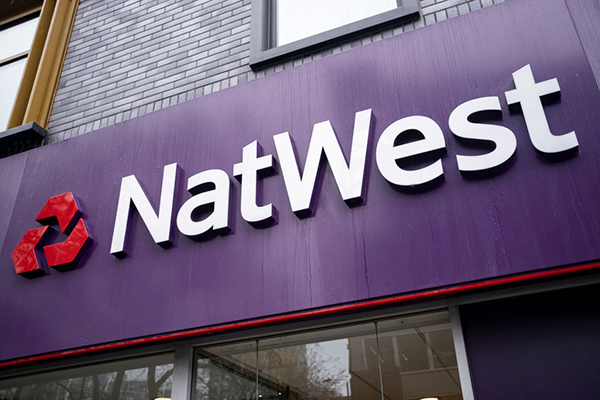Half-year results prove NatWest’s in a sweet spot
There's lots to like in these first-half figures where NatWest also flexed its financial muscles. ii’s head of markets runs through the bank’s latest numbers.
25th July 2025 08:21
by Richard Hunter from interactive investor

NatWest Group (LSE:NWG) is the preferred play in the banking sector and these numbers vindicate that optimism.
As far as investors are concerned, NatWest is in a sweet spot. The government shackles have gone, the group has prodigious amounts of cash and acquisitions to boost growth further seem likely.
- Our Services: SIPP Account | Stocks & Shares ISA | See all Investment Accounts
It would be a false comparison to reflect on the previously heady share price levels of almost £64 in 2007, when a bloated and overstretched Royal Bank of Scotland very nearly met its end. This NatWest is an entirely different and more focused beast and the scope for progress is increasingly apparent.
Indeed, it remains to be seen whether this new-found freedom will enable a more aggressive acquisition policy, with NatWest already having made what it described as two significant purchases in the form of Metro Bank’s mortgage book and Sainsbury’s Bank and reportedly having been rebuffed in an approach for Santander’s UK operation. Its significant cash generation will provide an interesting dilemma on whether to continue to bolster shareholder returns, make further acquisitions, invest heavily in the business particularly in regard to growing digitalisation, or perhaps a combination of all of these options.
At the headline level, pre-tax profit of £3.59 billion was 18.4% higher than the previous year, with the second-quarter contribution of £1.77 billion higher than the £1.65 billion which had been expected. Total income rose by 11.9% to £7.99 billion, with Net Interest Income 13.2% higher at £6.12 billion and non-interest income ahead by 8.1% to £1.87 billion.
- Lloyds Bank profit sails past forecasts
- Should you invest when markets are at all-time highs?
- What to expect from Labour’s major pension shake-up
Revenue generally was boosted by both higher trading and structural hedge income, as well as an £11.6 billion increase in lending activity which itself was accompanied by a £4.5 billion hike in deposits across the more traditional business. Indeed, the retail banking unit saw a 35% improvement in operating profit to £1.49 billion, driven by but not limited to the Sainsbury’s Bank acquisition and higher organic growth, where 1.1 million new customers were added in the second quarter.
Higher income was also accompanied by operating costs which increased by just 1%, partly due to the increasingly positive effects of digitalisation across the business, leading to a reduction in the cost/income ratio from 55.5% to 48.8%, which is likely to prove a sector-beating number. Other key metrics also reflected strong progress, with a Return on Tangible Equity (ROTE) of 18.1% against 16.4% in the corresponding period, while a capital cushion or CET1 ratio of 13.6% comfortably in line with group estimates.
The guidance was also raised, reflecting the group’s confidence in immediate prospects. Previously in a range of 15% to 16%, the ROTE estimate for the full year was lifted to 16.5%. while the total income projection of more than £16 billion compared to a previous outlook in the £15.2 billion to £15.7 billion range.
To complete the interim triumph, NatWest also flexed its financial muscles in announcing a £750 million share buyback programme and a hike to the dividend which leads to a projected yield of 5%, both in stark contrast to the disappointment around the Lloyds Banking Group (LSE:LLOY) numbers yesterday. This largesse is likely to be well-received by investors who have seen the twin benefits of capital and income growth of late.
- Trading Strategies: FTSE 100 high-flyer backed to keep outperforming
- Why I’d buy these high-performing bank stocks
- Sign up to our free newsletter for investment ideas, latest news and award-winning analysis
There is very little of note for the bears to feed on in these results. An additional impairment charge of £193 million for the second quarter (£81 million of which is attributable to the Sainsbury’s Bank acquisition) led to a number of £382 million for the half year, which is as much a measure of prudence rather than any underlying credit deterioration.
Instead, the positives are self-evident, and an understandably warm reaction to the numbers adds to a share price gain of 49% over the last year, as compared to a hike of 11.6% for the wider FTSE100, and of 99% over the last two years. All things considered, the market consensus of the shares as a strong buy is highly likely to remain intact.
These articles are provided for information purposes only. Occasionally, an opinion about whether to buy or sell a specific investment may be provided by third parties. The content is not intended to be a personal recommendation to buy or sell any financial instrument or product, or to adopt any investment strategy as it is not provided based on an assessment of your investing knowledge and experience, your financial situation or your investment objectives. The value of your investments, and the income derived from them, may go down as well as up. You may not get back all the money that you invest. The investments referred to in this article may not be suitable for all investors, and if in doubt, an investor should seek advice from a qualified investment adviser.
Full performance can be found on the company or index summary page on the interactive investor website. Simply click on the company's or index name highlighted in the article.